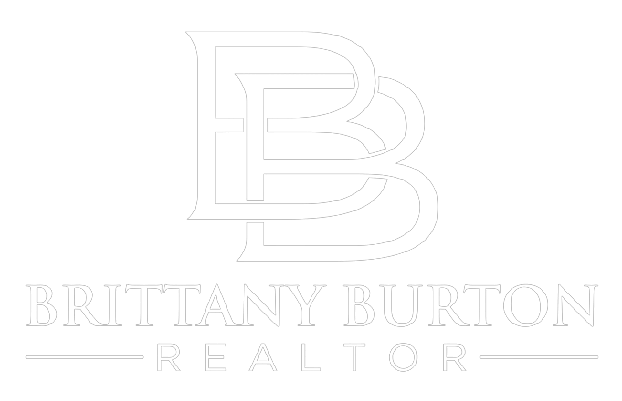A home appraisal is an unbiased professional opinion of a home’s value based on recent sales of nearby properties.
But who appraises your home?
An appraisal is conducted by an appraiser who is an independent third-party contracted (often by the mortgage lender) to establish the value of the property. It gives you a report about the condition of the property and its fair market value. In the case of rehab the assessment may also establish an “as is” value and a “subject-to” value – this means determining what it is Now (as is) and what should be its value after renovation (subject to).
You only need to complete an appraisal when buying or refinancing a property through a loan. However, it is strongly suggested that you complete an appraisal on the property to establish its post-repair value (ARV), even if you buy it all cash.
More on Appraisals from BiggerPockets
What is the Home Appraisal Process?
You don’t need to find an appraiser in person (unless you’re buying with all cash). However, you will need to keep an eye on the process to ensure that your earnest money is safe.
start the lending process
As soon as you put a property under contract, contact your mortgage lender to start the lending process. I usually email the signed purchase agreement as soon as it is executed.
Since the appraisal can take a few weeks to complete, the lender will immediately collect payment for the appraisal and order the appraisal through a third-party appraisal service. The lender also does not decide who the appraiser will be.
pay attention to deadlines
Verify that the assessment has been scheduled, then mark your calendars. Remember, your purchase agreement has a deadline to be met, and you don’t want to lose your hard-earned money just because you missed a deadline.
Pro Tips: Even though sellers usually already care about the appraisal process and how well the property appraises, make sure they are involved in the process and are fully aware of when the appraisal will take place. They should do their best to help you get the value you need to close.
already ready
Have a packet ready for your appraiser to help with the process. Include three to five “as is” comps (comparables) that have been sold in the area in the last six months. If you’re doing a “subject-to” evaluation, include your proposed construction budget and three to five “subject-to” compasses sold in the past six months. The evaluator may or may not be able to access your packet; However, it can help if they are unfamiliar with the field or want to better understand the level of rehab you want to do.
Extend Deadline (If Necessary)
Once you know the appraisal is complete, contact your lender to find out when the report will be back. If you need to extend your appraisal objection deadline, ask your Realtor to obtain a signed amendment and extension of the agreement so you can protect your earnest money.
review rating
Once your appraisal report is back, review it with your Realtor. If you have met or exceeded the required appraisal value, congratulations. If not, you’ll have some work to do.
How much does a home appraisal cost and how long will it take?
While the amount depends on the type of property being appraised, it is generally accepted that a typical single-family home will cost $300 to $450 to appraise. If your home is much larger than the average home, it may cost more to appraise the property because it takes longer to measure and assess the area in full.
You should expect to pay more if the home has a lot of damage because it requires more effort on the appraiser’s end. If your property has seasonal challenges or conditions, this may also affect the fee amount.
Home Appraisal From a Seller’s Perspective
If the rooms are not clean or in disarray, the appraiser may not be able to get an accurate picture of the condition of the home. Too much room can make it feel smaller or hide improvements you want to consider in the evaluation. There’s some clutter to watch:
- Clothes, especially in the bedroom. Clothes have to be kept in their closet or wardrobe or bureau. You don’t want them on the floor, on the bed, or scattered about.
- In the kitchen, your counters should be free of clutter. You will want to store your equipment in a cabinet and put away all dishes on the day of the test. You may also want to touch up the walls (i.e., paint or wallpaper).
- In the living room, there is often a problem of lack of good lighting and wrong use of space. Rearrange your furniture a bit. Play around to see what opens up the room and what closes it. Choose everything that makes the room look its best. Get rid of old furniture if you can, and swap out old lightbulbs for new ones.
If you plan to make upgrades, such as the exterior, before the home inspection, keep a folder with the documents for those upgrades. You can take before and after photos, keep receipts to show costs, and present these to the appraiser as they need to see the work you’ve done on the home. Over time did you put up a central cooling unit or fence in the backyard? Did you pay a contractor to do this work? If so, keep those invoices and permits with you. Remember that only permanent upgrades count towards your appraisal value.
If you have an appraiser coming to your home in a few weeks, you won’t have time to add another room or install a patio in your backyard. However, there are lots of small upgrades you can make to your home that can increase your home’s appraised value. Use these affordable and quick ideas to get started:
- Change your hardware. Cabinet and drawer handles can rust or stain over time. Replacing them takes little more than an afternoon, but can add considerable aesthetic value to your home.
- Remodel your roof. Is Your Home a Relic of the ’80s? If so, chances are you have a popcorn ceiling. You can add value to your home by removing it. Although it can be messy, it is a relatively inexpensive renovation that can fetch you a higher market value.
- Add kitchen backsplash. This is a fun way to improve the look of your kitchen. An appraiser coming in a few days? You can use a peel-and-stick backsplash to add color and avoid working with grout.
- If you have a little more time, consider more in-depth renovations like adding in hardscaping or replacing old appliances. However, be 100% positive that these upgrades will be completed before your evaluation. The last thing you want is for your home to be a construction zone when your appraiser arrives.
Research comparables, which are homes in neighborhoods that are similar in number of rooms and bathrooms, similar in location, and have the same overall square footage as your home. Researching these homes can help you understand what you can expect from an appraiser.
Before evaluating your home, make sure everything works. Correct what is not there. For example, test your heating and cooling systems and see how long it takes your home to reach a certain temperature, and check your home security system to make sure it meets code and the system works. .
Another important step is to check the windows and doors in the house. Open and close them, check the locks, confirm there are no warps or breaks. Test all the appliances in the house, from the dishwasher to the oven to the ceiling fan. Everything has to be functional, or it could affect the appraisal and thus the sale price.
If your valuation falls short, the deal isn’t dead yet. Here are some ways to solve it:
step 1: Check the report for errors. Contact your mortgage lender, if any, and then complete their appraisal objection form.
Common errors are using bedrooms, bathrooms, garages, square footage and incorrect comps. I’ve seen bedrooms left out, bathrooms left out, and square footage not accounted for on my personal deals.
step 2: Review the comparisons used by the appraiser. Were they in the right area? You can include notes and suggested comps on your lender’s appraisal objection form.
step 3: Schedule a time to speak with the evaluator to get their verbal feedback and comments.
Most importantly, remain respectful at all times during the process. The last thing you want to do is create a stalemate in the objection process.
Buy your first home with open eyes
Dodge the world’s most common financial trap! Learn from BiggerPockets CEO Scott Trench and podcast co-host Mindy Jensen how buying your home can destroy your wealth… or create more.
Home Appraisal From A Buyer’s Perspective
Let’s say the appraiser raises the price, great. If the appraiser doesn’t, you still have a few options for closing the deal.
Pro Tips: If you’ve done everything you can to maximize value, it’s time to look at the deal from the other side. Go back to the seller and negotiate a reduction in the purchase price. You can present a lower appraisal to the seller to prove your claim.
First: You and the seller must agree on a purchase price. Hopefully, they will agree to lower the purchase price to meet the appraisal. Very easy!
But if the seller won’t lower the purchase price, the deal can’t move forward unless you bring in additional money to close or break the purchase agreement by citing the appraisal objection contingency (if you include that in your offer). Are. As long as you do this within the Valuation Contingency window, this should completely protect your earnest money. Or, you can find another way to close the deal by using a different loan product (such as a hard money loan) or by finding private funding.
When you cannot choose your own appraiser, some third-party appraisal companies will allow you to request that an appraiser be removed from doing your appraisal. Therefore, it may be worth asking other investors in your area if they have a short list of appraisers with whom to submit these names to your lender before getting an appraisal.
Home Appraisal from a Refinancer’s Perspective
Home appraisal is necessary because the lender wants to know what the property is worth. They don’t want to be stuck with an asset worth much less than the loan owed on it.
The appraiser who does the appraisal looks at the property and decides on the final value of the home. It broadly compares the subject property to similar properties that have recently sold in the immediate vicinity.
The lending institution through which you are availing your loan will request for the valuation of the immovable property. The passage of the Dodd-Frank Act changed the way home appraisals are ordered. The lender has little or no contact with the appraiser until the work is done, so there is no “undue influence” on the appraiser to appraise the home at a certain price.
Once the appraiser has inspected the home and compared it to recently sold properties, they will write a report estimating the value of the home. The report will include what specific addresses are used as comparison properties for the value of the home, a description of the actual subject property, a map marking the location of the home, a photo of the property, and current real estate. General condition of the market.
Note by BiggerPockets: These are the views expressed by the author and do not necessarily represent the views of BigPockets.





